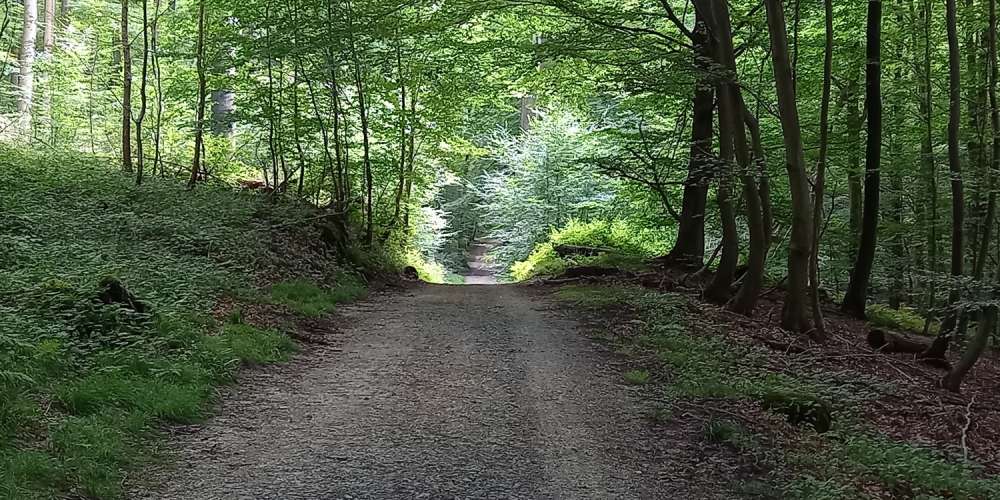
The Sonian Forest, with its rich history dating back to the early Middle Ages, is a remnant of the ancient Silva Carbonaria, also known as the Charcoal Forest. Originally part of the vast Ardennes forest, it was first mentioned as Soniaca Silva and has since been a witness to centuries of history, including serving as hunting grounds for nobility. Today, it is not only a natural treasure of Belgium but also recognized as a UNESCO World Heritage Site for its primeval beech forests, representing the ecological history of Europe since the last Ice Age.
A sprawling 4,421-hectare woodland on the outskirts of Brussels, the Sonian Forest is a biodiversity hotspot that supports a wide range of wildlife, including a variety of mammal species. However, Fauna and flora are reduced. It is crisscrossed with highways also causing an impoverishment of the ecosystem, with extinction of several plants and animals.
Of 46 different mammal species, seven have completely disappeared: the brown bear († +/- 1000), the wolf († +/- 1810), the hazel dormouse († +/- 1842), the red deer, the badger and the hare. Stag beetles have also disappeared from the forest.
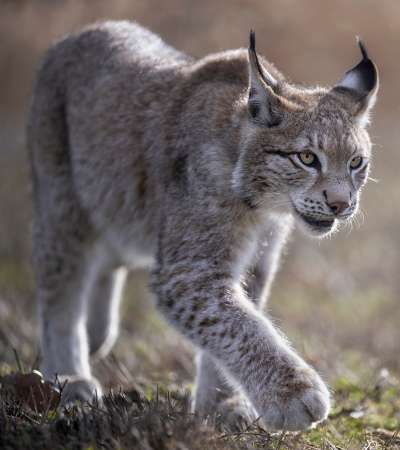
Historically present but now extinct in the region.
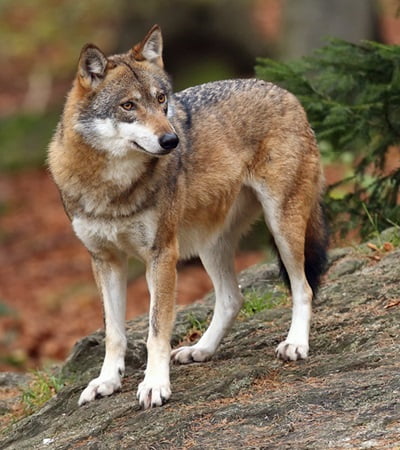
Once roamed the area but has been extinct in Belgium for many years.
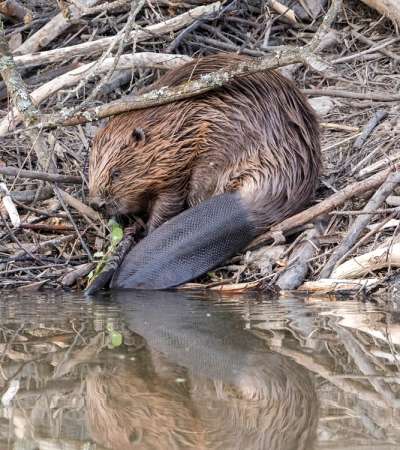
Was present in the past but became extinct due to hunting and habitat loss. Efforts are ongoing to reintroduce them in some parts of Belgium.
1. Edelhert (Cervus elaphus) – 2. Ree (Capreolus capreolus) – 3. Europese das (Meles meles) – 4. Rode vos (Vulpes vulpes) – 5. Europese boommarter (Martes martes) – 6. Hermelijn (Mustela erminea) – 7. Wezel (Mustela nivalis) – 8. Wild zwijn (Sus scrofa) – 9. Rode eekhoorn (Sciurus vulgaris) – 10. Pallas’ eekhoorn (Callosciurus erythraeus) – 11. Bruine rat (Rattus norvegicus) – 12. Zwarte rat (Rattus rattus) – 13. Bosmuis (Apodemus sylvaticus) – 14. Geelnekmuis (Apodemus flavicollis) – 15. Huismuis (Mus musculus) – 16. Dwergmuis (Micromys minutus).
17. Diverse vleermuissoorten
Inclusief 18 verschillende soorten, zoals de gewone dwergvleermuis en de grote vale vleermuis.
The Sonian Forest remains a vital habitat for many species, and conservation efforts continue to protect and enhance its biodiversity.
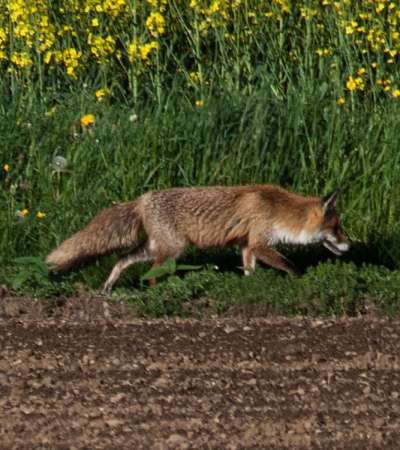
The Sonian Forest in Belgium, a magnificent beech forest close to Brussels, is home to a variety of wildlife, including the red fox (Vulpes vulpes). These foxes are an integral part of the ecosystem, contributing to its biodiversity. However, they have faced challenges such as a recent outbreak of Canine Distemper, which has been observed in urban red fox populations in Brussels. Despite this, the forest remains a vital refuge for these animals, offering a glimpse into the rich tapestry of Belgian wildlife. The Sonian Forest, with its ancient trees and diverse species, continues to be a place of natural heritage and ecological importance.
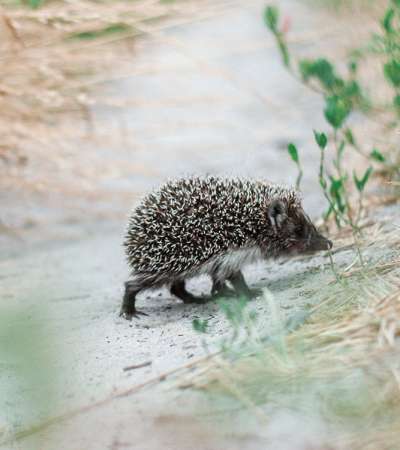
Hedgehogs are nocturnal animals that feed on insects, snails, and other small invertebrates. They are often found in the wooded areas and gardens surrounding the forest.
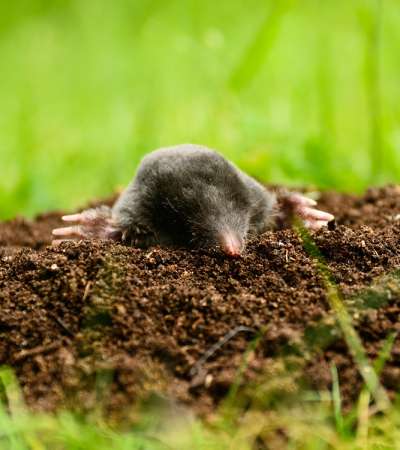
Moles live underground and dig extensive tunnel systems. They feed mainly on earthworms and insect larvae.
Both species hedgehigs and moles play an important role in the ecosystem of the Sonian Forest by regulating insect populations and aerating the soil.
While the presence of rats in any ecosystem might raise concerns, they play a crucial role in the ecological balance, serving as prey for predators and as scavengers. Efforts to maintain the forest’s integrity, such as habitat restoration and the control of invasive species, contribute to a healthy and diverse animal population, ensuring that all creatures, big and small, have a place in the Sonian Forest’s intricate web of life.
In the Sonian Forest, you are likely to encounter two main species of rats:
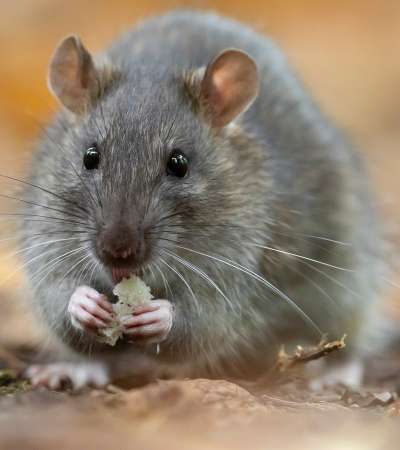
Also known as the Norway rat, this species is common in both urban and rural areas. They have a blunt snout and are quite adaptable.
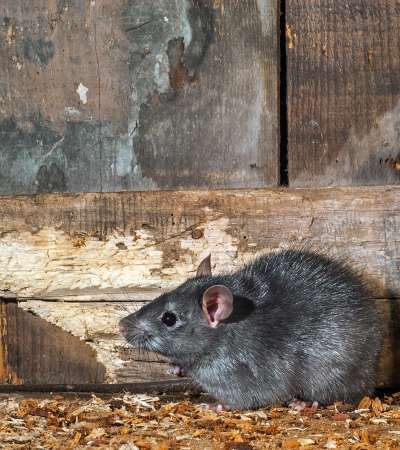
Also known as the roof rat, they have a more pointed snout compared to the brown rat and are generally smaller.
Given your description of the rats having a longer snout than normal but not very long, it sounds like you might have seen black rats. They are less common than brown rats but can still be found in various habitats, including forests and near water sources.
The Sonian Forest in Brussels is home to several species of mice. Here are some of the most common ones you might encounter:
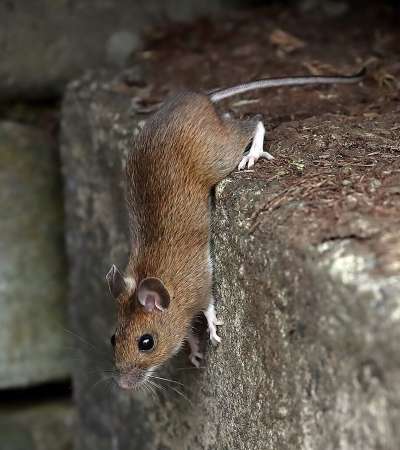
This species is widespread in Europe and is known for its large eyes and ears, which help it navigate its forest habitat. They are nocturnal and primarily feed on seeds, fruits, and insects.
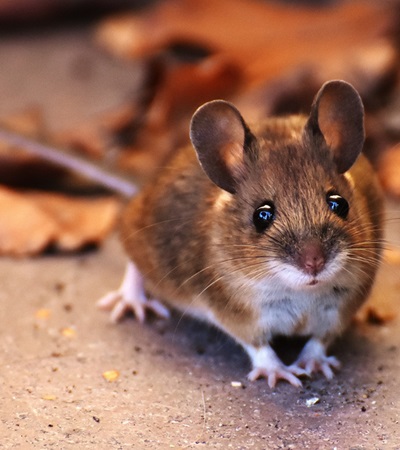
Similar to the wood mouse but distinguished by a yellow band around its neck. They are also nocturnal and have similar dietary habits.
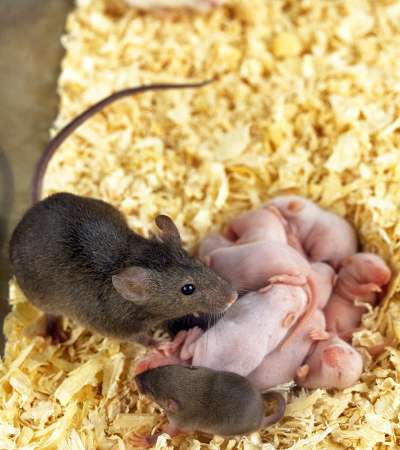
While more commonly associated with human dwellings, house mice can also be found in the forest, especially near the edges or in areas with human activity.
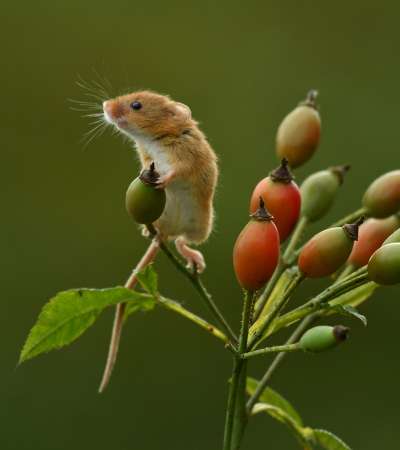
This tiny mouse is known for its ability to climb and build nests in tall grasses and shrubs. It is less common but can be found in suitable habitats within the forest.
These mice play important roles in the ecosystem, serving as prey for various predators and helping with seed dispersal. If you have any more questions or need further information, feel free to ask!
The Sonian Forest in Brussels is home to several species from the Mustelidae family. Here are some you might encounter:
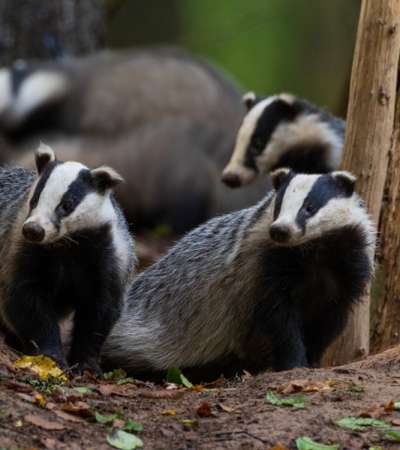
These nocturnal animals are known for their distinctive black and white striped faces. They live in setts, which are complex burrow systems.
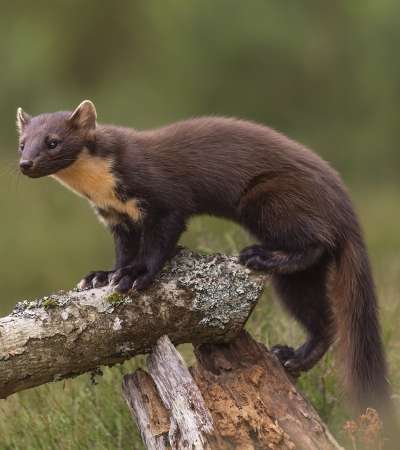 caroline legg, CC BY 2.0, via Wikimedia Commons
caroline legg, CC BY 2.0, via Wikimedia CommonsThis elusive and arboreal species has a slender body and a bushy tail. They are excellent climbers and primarily feed on small mammals, birds, and fruits.
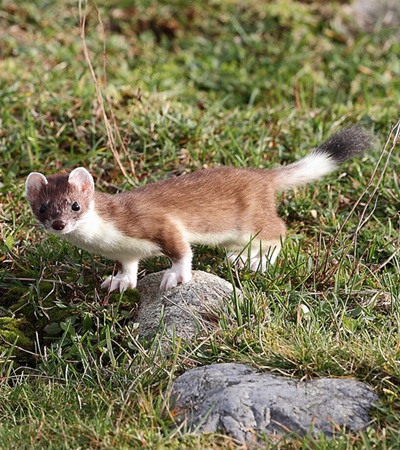
Also known as the ermine, stoats are small, agile predators with a characteristic black-tipped tail. They are known for their seasonal coat changes, turning white in winter.
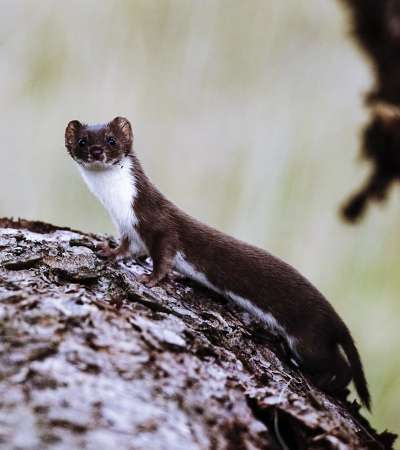
The smallest member of the Mustelidae family, weasels are fierce hunters despite their size. They have a brown coat with a white underbelly.
These species play important roles in the forest ecosystem, helping to control rodent populations and contributing to the biodiversity of the area¹².
Reindeer are not native to the Sonian Forest or any part of Belgium. They are typically found in the Arctic and sub-Arctic regions, such as Scandinavia, Russia, and North America.
The Sonian Forest is home to a variety of other wildlife, including deer species like:

The Sonian Forest provides a natural habitat for the roe deer, Capreolus capreolus. These graceful creatures are an integral part of the forest ecosystem, contributing to the biodiversity and natural balance. With their reddish-brown fur and elegant antlers, they are a sight to behold amidst the dense foliage. Conservation efforts in the area help ensure that the roe deer, along with other wildlife, continue to thrive in this beautiful forest. The Sonian Forest, being close to Brussels, offers a serene escape where one can witness these enchanting animals in their natural setting.
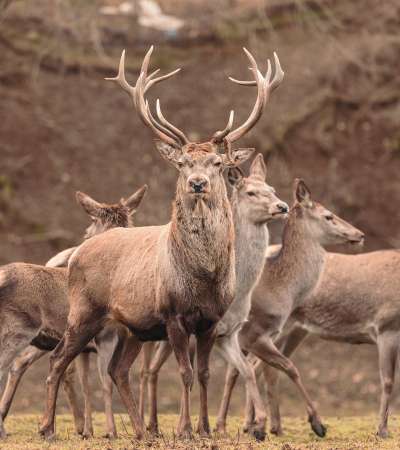
A variety of wildlife, including the majestic red deer, known scientifically as Cervus elaphus, finds a magnificent habitat in the Sonian Forest in Belgium. These deer are an integral part of the forest ecosystem, playing a role in seed dispersal and vegetation management. The forest provides a serene backdrop for the red deer, with its ancient beech trees and dense undergrowth offering shelter and food. Observing these creatures in their natural habitat is a reminder of the beauty and complexity of woodland ecosystems.
In the Sonian Forest, you can find the following squirrel species:
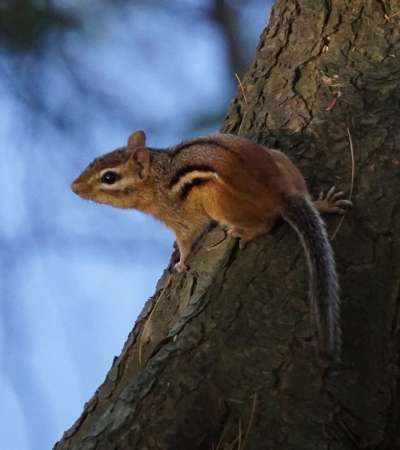
Asian ground squirrels were sold as pets in some regions In the 1980s, the population of Asian ground squirrels in the Sonian Forest grew massively. These animals were often bought as pets and then released into the wild or escaped themselves. This allowed them to multiply. However, today they are almost extinct in that region. It is always good to be aware of the impact of releasing exotic pets into the wild.
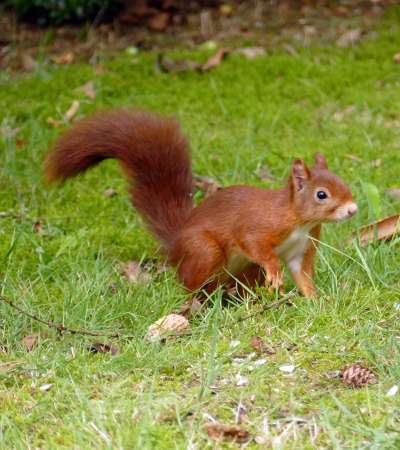
This is the most common squirrel species in the forest. They are known for their reddish fur and bushy tails. Red squirrels are arboreal and primarily feed on seeds, nuts, and fruits.
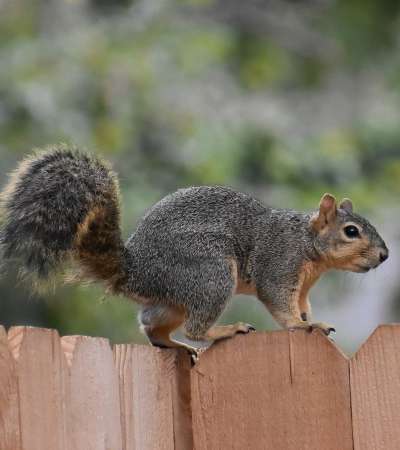
Also known as the red-bellied tree squirrel, this species is native to China and Southeast Asia but has been introduced to various parts of Europe. They have a distinctive red belly and are adaptable to different environments².
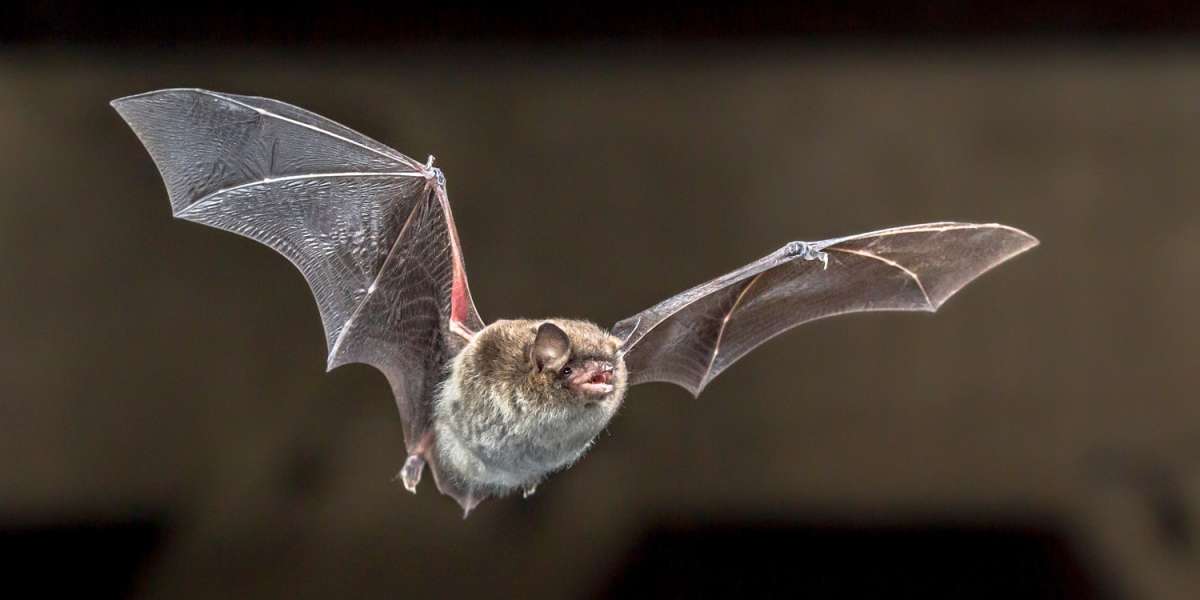
The many species of bat in the forest led to it being classified as a Natura 2000 protected site. This includes:
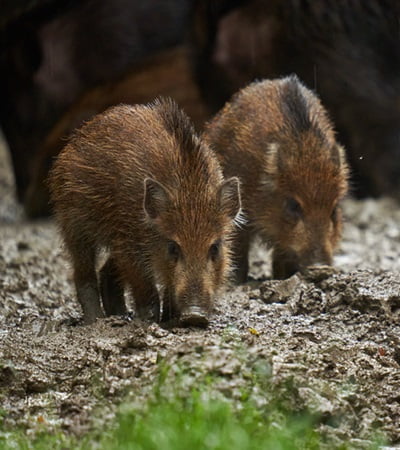
The boar was thought to have been extinct since 1957, but in 2007, new specimens were discovered roaming the wood. According to the Flemish Agency for Nature and Forest (ANB), this is unlikely to be a natural spread, but probably two to four animals that most likely were either released or escaped from captivity.
The Sonian Forest in Brussels is home to a rich variety of mammal species, both currently living and some that have become extinct or are no longer present. Here are some of the notable species:
The measures being taken to boost Brussels’ rich plant and wildlife.
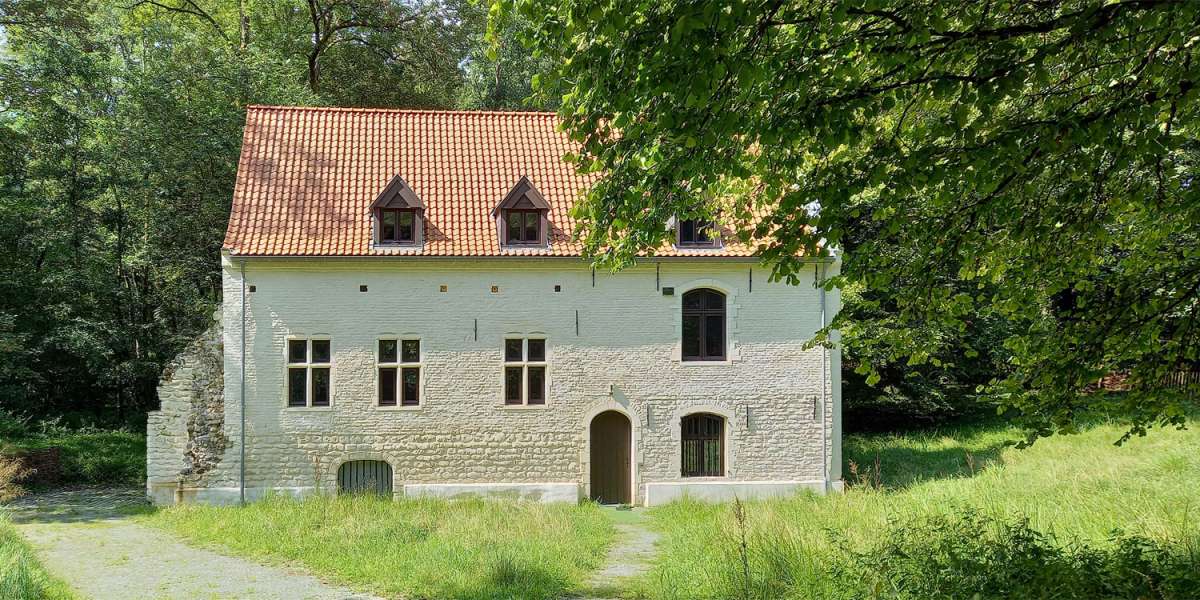
The remains of the Château de Trois-Fontaines. In this location, at the time unsafe, Duke John III of Brabant had a fortified refuge built in 1323, surrounded by a moat and flanked by a keep and a chapel. At the beginning of the 15th century, after the addition of a new building, the small fort became the residence of the gruyer, the officer responsible for watching over the dukes’ hunting grounds. Poachers were locked up there and a small garrison also had its quarters there. In 1584, a fire destroyed the keep, which was rebuilt. The current building dates from this period. The keep and other buildings were destroyed at the beginning of the 19th century.

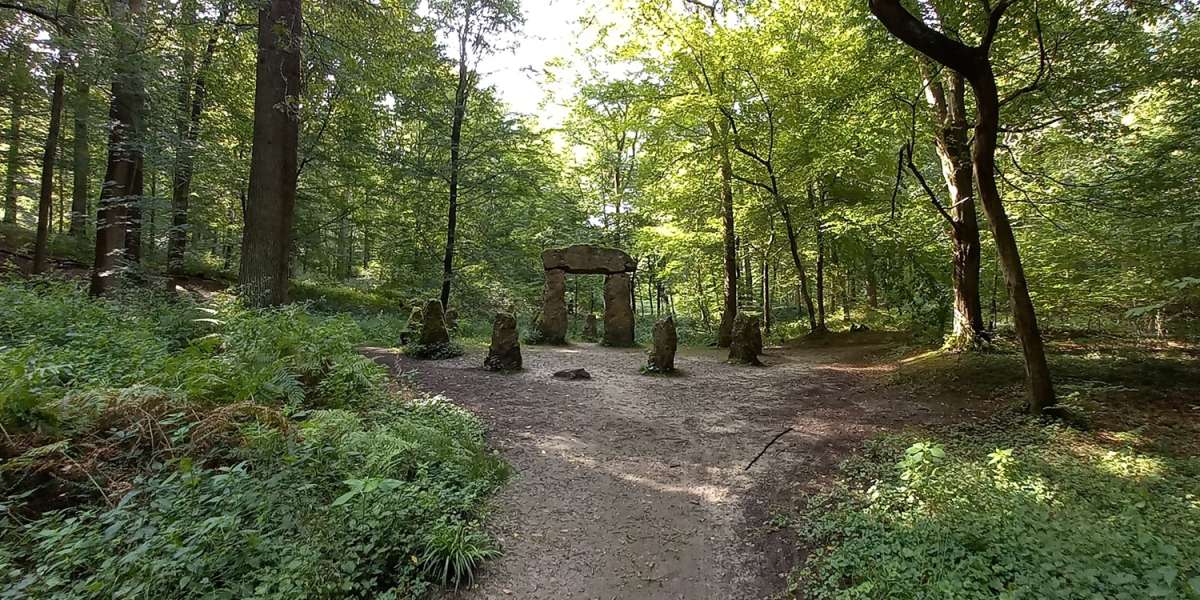
The memorial to the forest rangers
This monument, consisting of a dolmen surrounded by a circle of eleven standing stones, was erected in 1920 in memory of eleven forest rangers killed during the First World War.[Click]

The Red Cloister, or Rouge-Cloître, situated on the edge of the Sonian Forest, is a site steeped in history and natural beauty. Originally an Augustinian priory founded in 1367, it has served various functions over the centuries, from a religious community to a brewery and paper mill after its dissolution during the French Revolution. Today, it stands as a testament to Belgium’s rich cultural heritage, having been restored and transformed into a public park. The Sonian Forest itself, a UNESCO World Heritage site, is an ancient woodland that has witnessed the passage of time from the Romans to Napoleon. With its majestic beech trees and historical ruins, the Red Cloister serves as a serene getaway for nature lovers and history enthusiasts alike, offering a unique blend of tranquility and education. Its value as a touristic attraction lies not only in its picturesque landscapes but also in its ability to connect visitors to the past, making it a cherished part of Belgium’s unsung treasures.
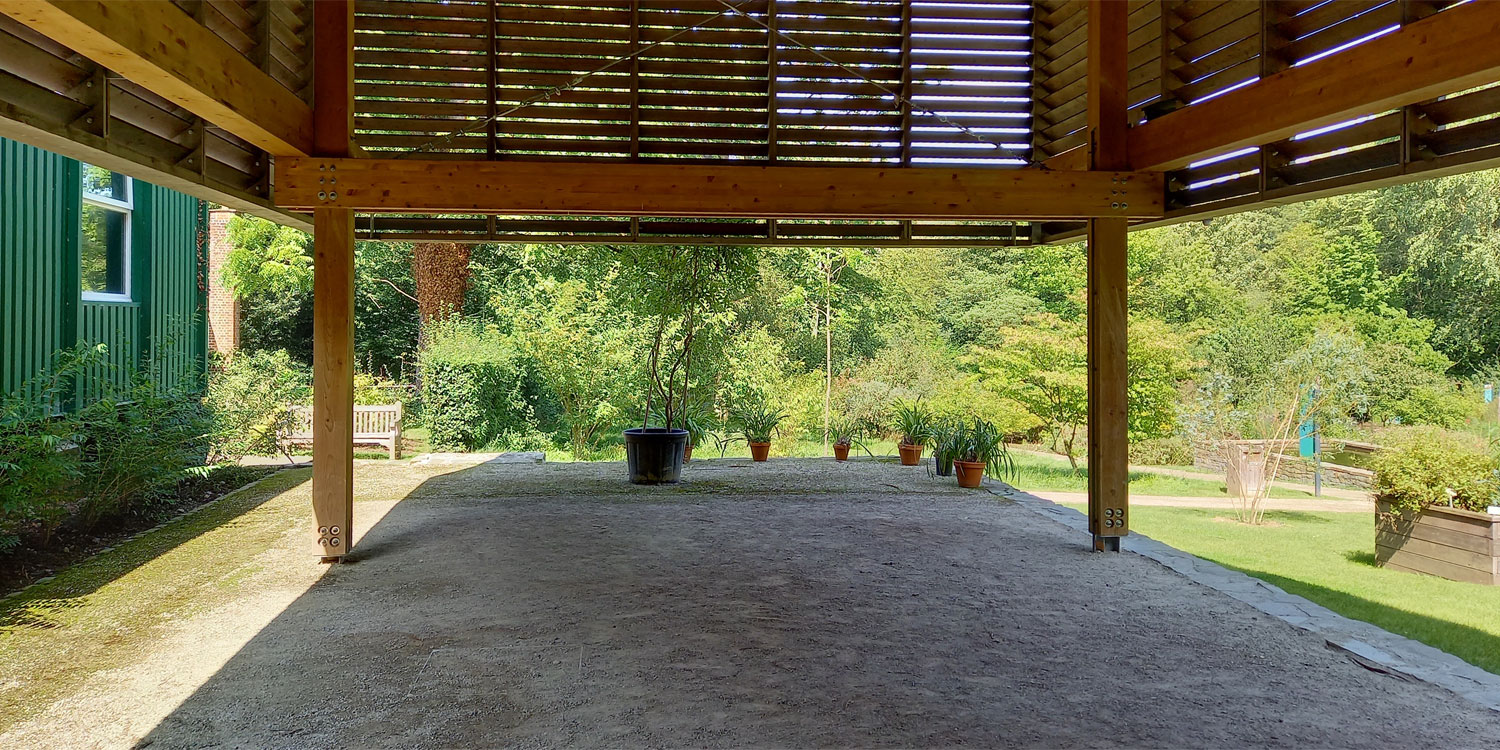
The Jardin Jean Massart, established in 1922, is a botanical garden that serves as a bridge between the urban landscape of Brussels and the verdant expanse of the Sonian Forest. It was founded by Jean Massart, a professor of botany, and is now a property of the Brussels-Capital Region. Managed in partnership with Bruxelles Environnement and the Université Libre de Bruxelles, the garden is dedicated to public awareness, education, and research. With nearly 2000 plant species organized into thematic collections, such as the medicinal and aromatic plants garden, it is one of Belgium’s richest botanical collections. The garden’s functions extend to scientific research and university teaching, making it a valuable resource for students and researchers alike. Additionally, it offers educational activities and events for schools and the general public, fostering a deeper understanding and appreciation of biodiversity and plant conservation. The Jardin Jean Massart is not only an attraction for nature enthusiasts and professional naturalists but also serves as an educational platform, enriching visitors’ knowledge of plant life and ecological systems.
Adjacent to this botanical haven is the Sonian Forest, a UNESCO World Heritage Site, recognized for its primeval beech forests that illustrate the ecological processes of Europe’s woodlands since the last Ice Age. This forest, once part of the ancient Silva Carbonaria, has a rich history dating back to the early Middle Ages and has served various roles from providing timber and firewood during the Iron Age to being a hunting ground for the Dukes of Brabant. Today, it is an important green space for the region, offering a natural refuge and a place for recreation and contemplation for the residents and visitors of Brussels.
The Jardin Jean Massart is a botanical treasure trove, hosting nearly 2000 plant species within its thematic gardens. Among the most notable are the medicinal plants, with over 300 species classified according to their principal active ingredients. This collection is particularly rich and serves as an educational resource for understanding the healing properties of plants. The garden also boasts a collection of cultivated plants that trace the history of certain species from their wild ancestors, offering insights into plant domestication and evolution. Additionally, the evolutionary garden showcases the diversity of flowering plants, arranged to reflect their evolutionary relationships. The arboretum features a variety of exotic tree species, predominantly conifers, while the orchard is home to a selection of fruit trees including apple, pear, peach, and cherry varieties. These collections not only represent the garden’s scientific value but also its commitment to conservation and education, making it a fascinating destination for both casual visitors and botanical experts.
There are several ways to reach the Sonian Forest from the center of Brussels. Here are the options:
### By Bus
– **Line 71 and Line 72**: You can take the Line 71 bus from De Brouckere to Flagey, then transfer to Line 72 to reach Watermael-Boitsfort Drève des Bonniers⁴.
### By Metro
– **Line 5**: Take the metro to Herrmann-Debroux station. From there, you can walk or take a bus to the forest⁵.
### By Tram
– **Line 44**: Stops include Trois Couleurs, Auderghem-Forêt, Drève des Brûlés, Tir aux Pigeons, Quatre Bras, Ravenstein, Brusselse Steenweg, Oppemstraat, and Tervuren Station.
– **Line 94**: Stops include Hippodrome de Boitsfort, Coccinelles, Boitsfort Gare, Ten Reuken, and Hermann-Debroux⁵.
### By Train
– **Groenendaal Station**: Take a train from Brussels Central Station to Groenendaal. The journey takes about 29 minutes⁷.
### By Car
– **Driving**: The drive from the center of Brussels to the Sonian Forest takes about 19 minutes, covering a distance of approximately 8.3 miles⁴.
### By Bike
– **Cycling**: Cycling to the forest is a pleasant option. You can park your bicycle safely in the bicycle sheds at the various gateways of the forest¹⁴.
Would you like more details on any specific mode of transport?
Bron: Gesprek met Copilot 12/9/2024
(1) Brussels to Sonian Forest – 5 ways to travel via line 71 bus … – Rome2rio. https://www.rome2rio.com/s/Brussels/Sonian-Forest.
(2) The Sonian Forest in Brussels – Bravo Discovery. https://www.bravodiscovery.com/brussels/the-sonian-forest-in-brussels/.
(3) Brussels Central Station to Sonian Forest – Rome2rio. https://www.rome2rio.com/s/Brussels-Central-Station/Sonian-Forest.
(4) Cycling & MTB – Sonianforest. https://www.sonianforest.be/discover-experience/cycling-mtb/.
(5) . https://bing.com/search?q=How+to+reach+Sonian+Forest+from+center+of+Brussels+by+metro.
(6) Sonienwald. http://sonianforest.be/.
(7) Gateways – Sonianforest. https://www.sonianforest.be/practical/gateways/.
(8) . https://bing.com/search?q=How+to+reach+Sonian+Forest+from+center+of+Brussels+by+train.
(9) Brussels-North Station to Sonian Forest – 5 ways to travel via train. https://www.rome2rio.com/s/Brussels-North-Station/Sonian-Forest.
(10) Sonian Forest, Brussels | Ticket Price | Timings – TripHobo. https://www.triphobo.com/places/brussels-belgium/sonian-forest.
(11) . https://bing.com/search?q=How+to+reach+Sonian+Forest+from+center+of+Brussels+by+bus.
(12) . https://bing.com/search?q=How+to+reach+Sonian+Forest+from+center+of+Brussels+by+tram.
(13) . https://bing.com/search?q=How+to+reach+Sonian+Forest+from+center+of+Brussels+by+car.
(14) . https://bing.com/search?q=How+to+reach+Sonian+Forest+from+center+of+Brussels+by+bike.
(15) Sonian route | VISITFLANDERS. https://www.visitflanders.com/en/flandersfinestcycleroutes/sonian-route.
(16) undefined. https://commons.wikimedia.org/wiki/File:Le_Roy_d%27Espagne_.
Comments are closed.
25 replies on “The Sonian Forest, Brussels Be, and its fauna”
Woah! I’m really enjoying the template/theme of this website.
It’s simple, yet effective. A lot of times it’s tough to
get that “perfect balance” between usability and visual
appearance. I must say you have done a amazing job
with this. Also, the blog loads very fast for me on Firefox.
Excellent Blog!
I visited multiple websites except the audio quality for audio songs present at this
web page is genuinely fabulous.
Thanks for finally talking about > Nexxtrip Europe best citytrips and other travel deals Cheap flight and hotel bookings, airport
shuttle, taxi, car and bike rentals, tours, and skip-the-line for all European destinations < Liked it!
I am really pleased to read this blog posts which includes tons of useful information, thanks for providing these data.
Hi, just wanted to mention, I liked this blog post. It was funny.
Keep on posting!
You really make it seem so easy with your presentation but I find this matter
to be actually something which I think I would never understand.
It seems too complex and extremely broad for me.
I’m looking forward for your next post, I will try to get the hang of
it!
This paragraph will assist the internet users for setting up new website or even a
blog from start to end.
My brother recommended I might like this blog.
He was totally right. This post truly made my day.
You can not imagine simply how much time I had spent for this information! Thanks!
win88 win88 win88
Touche. Sound arguments. Keep up the good
effort.
tempototo tempototo tempototo
Post writing is also a fun, if you be familiar with afterward you can write otherwise it is difficult to write.
agen138 agen138 agen138
I think the admin of this web page is really working hard in favor of his
web site, for the reason that here every information is quality based
material.
hoki777 hoki777 hoki777 hoki777 hoki777
Wonderful, what a website it is! This weblog gives useful data to us, keep it up.
[…] the spirit of Copenhagen and its people is one of resilience and unwavering strength. To the future Flemish & other nationalities’ stars, this setback is not the end of your journey but a pivot to […]
tokekwin
When I initially left a comment I seem to have
clicked on the -Notify me when new comments are added- checkbox and from now on each time a comment is added I receive 4 emails with the exact same comment.
There has to be a means you can remove me from that service?
Kudos!
nama ff seram jagoan m1887
Ahaa, its good conversation regarding this post at this place
at this web site, I have read all that, so at this time me also
commenting here.
rajawd777
Wow, awesome weblog layout! How lengthy have you been running a blog
for? you make running a blog look easy. The total look
of your web site is excellent, let alone the content! snack video downloader
yandex semua
It’s an awesome piece of writing designed for all the web visitors; they will get advantage from it
I am sure.
chord anak lanang chord anak lanang chord anak lanang
What’s up to every body, it’s my first go to see of this blog; this blog
carries remarkable and in fact excellent material in support of visitors.
pragmatik play pragmatik play pragmatik play
Wow, that’s what I was seeking for, what a material!
present here at this webpage, thanks admin of this web
page.
duatoto duatoto
duatoto duatoto (https://northernfortplayhouse.com/)
Do you mind if I quote a few of your posts as long as I provide credit and
sources back to your website? My blog site is in the very same niche as
yours and my users would genuinely benefit from some of the information you provide here.
Please let me know if this okay with you. Many thanks!
Yes, that is okay.
girona vs mallorca
I absolutely love your site.. Excellent colors & theme. Did you make this web site yourself?
Please reply back as I’m trying to create my very own website and would like to learn where you got this from or exactly what
the theme is named. Appreciate it!
togel korea
Heya i’m for the first time here. I came across this board and I
find It really useful & it helped me out much. I hope to give
something back and aid others like you aided me.
erek erek 84
Aw, this was a very nice post. Taking the time and actual effort
to produce a top notch article… but what can I say… I put things off a lot and don’t manage to get nearly anything done.
porn
I’m not that much of a online reader to be honest but your blogs really nice,
keep it up! I’ll go ahead and bookmark your website to come back later.
Many thanks